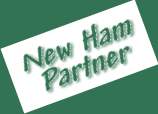
In the past, the one things that stops most people from completing a project is the idea of making their own Printed Circuit Boards (PCB's), especially on a project with any quantity of integrated circuits (IC's). Here is a method of making printed circuit boards that has been refined through time. For those who wish to make a small quantity or just one PCB, try the following procedure on your next project.
To start, you will need:
Start by cleaning the board material with the fine steel wool. This will remove any copper oxidation and allow the etch resist to stick better.
Cut the artwork to size leaving about a half-inch border. Tape the artwork to the board material very tightly (use any transparent tape).
Drill the board using the taped-on copy as your guide. Drill through both the paper and board material at the highest speed possible. Drill out all the holes with the # 60 drill first. For larger holes, use the #60 hole as a guide hole. Do not attempt to drill a larger hole until the taped-on artwork has been removed. Even a 1/16" drill can grab the paper and remove a large piece of the taped on artwork leaving you to wonder "Did I miss any holes?" The answer has always been YES!
Remove the taped-on artwork. If there are any larger holes to be drilled, drill them now. Clean the board again with fine steel wool: this time the steel wool is used to remove burrs the drilling left behind
(NOTE: by drilling all the holes first you get the correct alignment for transistors and Dual In-Line Packages IC's done first. No guessing later when laying down the traces).
Using your second copy as the guide, connect the drilled holes with the etch-resist pen. Allow it to dry, then put on a second coat of the etch-resist. (Note: A Sanford Sharpie permanent marker will work as well as a the Radio Shack etch-resist product and you can buy these in boxes of twelve for club projects. In addition to this, the Sharpie pen points can be trimmed with an X-acto knife to give you different pen widths and shapes.) If you make a mistake, erase the etch-resist with steel wool and try again.
Put the board in the etchant (use a plastic or non-metallic dish as the etchant will eat a metallic dish). Constantly agitate the board in the etchant. This takes away the copper and allows fresh etchant to reach the board material. In club situations I have used large (gallon-size) ziplock freezer bags in place of the dish. Use a bag within a bag to prevent leaks and reduce the smell of the etchant. And if you use the ziplock bag method, snip off the sharp, square corners of the board using a pair of wire cutters as a sharp corner can poke a hole in the ziplock bag.
This is the boring part. It can take as long as 30 to 45 minutes to get the desired result. Keep on agitating. You must keep it in the etchant until all the undesired copper is etched away.
Dispose of the etchant (in an environmentally sound manner) and wash the board with water to stop the etching process. A garden hose outside is good for this job as even a drop of the etchant can permanently mar sink fixtures if not immediately washed off.
Trim the board to size with whatever tool you have handy (hacksaw, nibbling tool, etc). I have found that an old discarded paper cutter works quite well.
If you want to tin the board, tin it with solder or a tin-plating solution. Now you have a PWB ready for assembly.
This same method can be used for making double-sided boards as well. After you have taped one side of the artwork to the board material, drill the registration holes or about four of the artwork holes as close as you can find to the four corners.
Take the second side of your artwork (also a copy) and find the registration holes (the ones you are using to line up both sides) and poke holes through the paper with a straight pin or lead clippings. Place straight pins in each one of the registration holes. Placing the pins in the holes already drilled will line up the second side of the artwork to the first. Bend the pins down to hold the second side in place and tape this artwork down firmly as well. Remove the pins.
Drill a test hole or two to check the registration and alignment of the artwork top to bottom. If the registration is good, drill the rest of the board. If not, adjust the artwork and try again.
When making the copies of the artwork, try to use the same copier. Even the best copier stretches or enlarges the artwork a little, but the small amount that this distorts the image is not a concern if you are laying the traces down by hand.
Printed Wiring Board of even moderate complexity have been made with this method and by amateurs as young as eleven (and a half) years old.
73 and GL from
Gerry WD4BIS
![]()
Copyright 2005 Gerald Crenshaw WD4BIS. All rights are reserved.
Permission in advance is granted to those who use this for non-profit Amateur Radio club newsletters as long as it is used unmodified including this copyright notice and that notice is given to the author via email ([email protected]). In addition, please forward a copy of any newsletter this appears in to: Gerry Crenshaw WD4BIS, c/o GARC, 1027B W. Austin St, Garland, TX, 75040
Web site maintained by Janet Gobeille Crenshaw (WB9ZPH)